In the world of prototyping and production, there is a wide array of metal surface finishing options available. But it's important to note that not all of these finishes are equally suitable for every product. Some surface finishes are primarily designed to enhance the visual appeal of the product, while others focus more on improving its functionality. There are even some that can do both. In this context, we will specifically delve into metal plating finishes.

It's quite common for people to mistake metal plating for metal coating, and this guide aims to clarify that distinction. A metal plating finish brings numerous benefits to the material it's applied to, and there are multiple reasons why one might choose to plate. In this article, we will explore the different types of plating techniques and how they impact the metal surface. Additionally, the information provided here will assist you in ensuring a higher quality finish. You'll gain insights into the various plating methods, their specific effects, and how to make the best choices to achieve the desired finish outcome. This knowledge will not only help you in your current projects but also in future endeavors involving metal surface finishes.
So, what exactly are metal plating finishes? To understand this, we need to go back to the fundamentals. Metal plating is a post-production technique where a thin layer of metal is applied or deposited on the surface of a workpiece. This process not only enhances the appearance of the workpiece but also provides various functional benefits, adding an extra layer of protection and improving its properties.
Plating is essentially the process of having a thin layer of one metal coat a substrate. This is done to enhance the overall quality of the product. Metal plating finishes have numerous benefits. One of the benefits is improving the corrosion resistance of the material. It can also harden the material surface, making it more durable. Additionally, it improves the adhesion of paint, ensuring a better finish.
Plating can boost the solderability, making it easier to join components. It also increases the wearability of the part, reducing the likelihood of damage over time. Furthermore, it reduces friction, allowing for smoother operation. It alters the conductivity and conductibility, which is important in various applications. Plating also improves the heat resistance of the material, making it suitable for high-temperature environments. Moreover, it provides a shield against radiation, protecting the material from harmful effects. The uses of plating in precision machining are different because it has the ability to change the qualities and performance of materials, enabling the creation of more advanced and functional products.
Now, let's focus on the basic principle of the plating process. Plating involves multiple steps, including pretreatment and post-treatment. There are various plating techniques, and we'll touch upon them in this guide. But in this part, we'll concentrate on the basic procedure of electroplating, which is the most commonly used process. Understanding this fundamental aspect is crucial for delving into the world of plating.
Step 1
Plating begins with preparing the substrate by pretreating it to remove harmful contaminants. This crucial process may involve several sub-steps depending on the materials. For cleaning, various techniques and chemicals are used, with the type depending on the material. Alkaline cleaners work well on some metals, acidic cleaners on others, and inhibited alkaline cleaners help with certain metals. Some base materials need only one cleaning, while others may require multiple. After each treatment, rinsing with distilled water is important to remove chemical cleaners, ensuring a satisfactory and uniform coating.
Step 2
The second step is to determine the effectiveness of the cleaning process. The requirements of your parts will determine the plating process, and at the same time, it determines how clean your substrates should be. For example, some CAD plating techniques require only the removal of dirt and bulk soil. On the other hand, others require the complete removal of oil and grease. So, how do you check for the cleanliness of your substrate? One way is the water break test. Once you completely rinse the final product, hold the base material and observe how water pours off its surface. If the pouring off is in one large sheet, then there is no oily residue. However, if there is beading of water, oil and grease may still remain. Another method is the wipe test. Here, wipe the substrate’s surface using a clean cloth. If you notice dirt or residue on the cloth, you may need to clean the substrate further. Reflectivity is also another way to gauge the cleanliness of some products.
Step 3
The third step is to set up the plating station. Once you achieve the appropriate level of cleanliness, you can now begin the process. It starts with the assembly of the station. First, you need a rectifier or other source of direct current, as our focus is on electroplating. Other necessary materials include a tank (or barrel), a cathode, an anode, and a proper plating solution. The anode consists of solid pieces of metal that you want to deposit, while the cathode is your substrate. Most manufacturers use water as the plating solution. It is relatively easy to set up a plating station. First, attach the negative lead of your rectifier to your substrate. Then, place the positive lead right in the plating solution.
Step 4
The fourth step is the plating process. As soon as the electrical current is turned on, the deposition process begins. If you want a thicker plated finish on your product, then you need to expose it for a longer time to the current. When plating different metals, you need to consider some variables, such as voltage levels, temperatures, immersion times, etc. In some cases, there may already be prepared electroplating solutions available, and in such situations, the settings for each factor will be printed on the container. Generally, higher voltages tend to produce more satisfactory results, and there will be no bubbles in the solution.
Step 5
The fifth step is the post-treatment process. Once you achieve proper deposition on your metal surface, it is often necessary to conduct post-treatment cleaning. This is important to prevent tarnishing. Several cleaners are available in the market. Electrolytic polishing after electroplating is also an effective technique that helps improve corrosion resistance.
Step 6
The sixth step is waste disposal. After many plating processes, there is often the creation of heavy metals, which can be hazardous due to their high toxicity levels. Therefore, it is crucial to quickly and effectively pretreat the plating wastewater before disposal.
The following are some of the standard plating finishes available at the industrial level:
Zinc Plating
Zinc plating is a widely used process that offers various options. One of the popular choices is zinc nickel plating, which combines the benefits of zinc and nickel to provide enhanced corrosion resistance and durability. Additionally, there are zinc plating kits available in the market, allowing individuals to perform zinc plating at home or in small-scale operations. Another interesting variant is black zinc plating, which gives a unique and attractive finish to the metal surface. In this process, the substrate is the cathode and metallic zinc is the anode in a soluble zinc salt electrolytic bath, similar to regular zinc plating. Zinc plating near me can be carried out using these different methods, producing a very ductile coating, and the thickness and uniformity can be easily controlled.
Tin Plating
Tin is a soft metal with good conductivity and corrosion resistance. It's non-toxic and was used in ancient times. Tin plating improves metal's properties like solderability and appearance. It's used on electrical terminals, connectors, and copper components. The process starts with cleaning the metal and involves electroplating with a tin solution. The thickness depends on the time in the solution.
Chrome Plating
Chrome plating typically uses chromic acid and trivalent chromium baths to create an overlay on metal parts. Its main purpose is to enhance the aesthetics of the material, but it also increases the corrosion resistance and hardness. Chrome-plated parts are suitable for industrial applications and can sometimes help restore tolerances on worn parts.

Copper Plating
Copper plating is often chosen when cost-efficiency and high conductivity are required. Copper plating near me usually serves as a leading coating pretreatment for subsequent plated finishes. Copper plating solution is one of the most popular metal plating finishes for electronic components like circuit boards due to its low material cost and high plating efficiency.
Nickel Plating
Nickel plating is another commonly used plating metal, especially in electroless plating. It helps coat household products to enhance their aesthetics and wear resistance. It works well on aluminum plating and bronze plating, as well as several other metals, and also serves as the underlying plating for chromium.
Gold Plating
Gold plating is popular for its high electrical conductivity and resistance to oxidation. It is a simple way to impart these properties to silver and copper metals, and it is widely used in improving conductivity in electronic parts like electrical connectors.
Silver Plating
Silver plating, similar to gold plating, improves the aesthetic appeal of the material. This plating metal process also plays a role in electrical conductivity. Many manufacturers choose silver plating for its cost-effectiveness as it is cheaper than gold, and it plates copper parts and plating aluminum more effectively.
Metal plating surface finishes offer numerous advantages, drawing the attention of multiple industries. Brass plating near me is one of the common metal plating finishes that not only enhances the aesthetic appearance of the material but also plays a significant role in protecting components from wear and corrosion.
Additionally, the various metal plating finishes are compatible with a broad range of materials. It also offers some benefits like improving the hardness and strength of a material. However, despite the wide array of benefits that this post-processing technique brings to manufactured parts, there are also some drawbacks. For instance, the plating may chip and crack in certain environments due to wear. Furthermore, the metal plating process can be time-consuming, which might affect a component's specifications.
Metal plating techniques play a crucial role in various industries for custom products. Some common techniques are as follows:
Electroplating
Electroplating is a versatile process that can be used for various metals and alloys,such as titanium plating. One common type is steel plating, where a layer of steel is deposited on the workpiece. Steel plating offers excellent strength and durability, making it suitable for applications in industries such as automotive and construction. Another option is plating iron, which provides a protective coating for iron-based workpieces and helps to prevent corrosion. Both steel plating and plating iron are important in electroplating, as they contribute to enhancing the properties and appearance of the workpiece. In this process, positive metal ions attach to the negatively charged workpiece, and the dissolved metal particles rise to the surface, resulting in a smooth, quick, and even coating that further improves the workpiece's qualities, provides protection, and gives it an aesthetic finish.
Electroless Plating
Electroless plating is an alternative to electroplating, simpler, and more cost-effective. It uses a chemical bath and catalytic reduction to deposit metals like copper, gold, nickel, and silver on different materials. It is suitable for hard surface components with excellent corrosion resistance, commonly used in the oil and marine industries for manufacturing components like pumps and valves.
Immersion Plating
Immersion plating involves immersing a metal in a chemical compound with noble metal ions. A natural pull displaces the initial metal ions, creating a thin layer of noble metal ions. This process is slower than the others and is mainly used for noble metals like platinum, silver, and gold.
Carburizing
Carburizing is a process that solidifies the metal surface while keeping the underlying metal soft. It is similar to carburization, surface hardening, or case hardening, forming a thin, solid layer called the surface case. Manufacturers carburize parts after machining to final form, helping make elements harder, like in pattern welding. It is used by product designers to prevent corrosion in metal-using industries.
Physical Vapor Deposition (PVD)
Physical Vapor Deposition (PVD) is a thin film preparation method that physically sublimates a material source into gaseous atoms, molecules, or ions under vacuum. A specific function film is then deposited on the substrate using low-pressure plasma or gas. Common techniques include sputtering deposition, ion plating, vacuum evaporation, and arc plasma plating. PVD coating offers rapid deposition, strong adhesion, excellent diffraction, and a wide application range.
Plasma Spray Coating
Plasma spray coating is a flexible and effective thermal spray technique that sprays heat-softened or melted materials on a surface to achieve a desired coating. It uses powerful spray coating technology and can spray various materials like ceramic, metal, and cermet. It has applications in jet engine protection, restoring worn parts, etc., and offers excellent resistance to wear, abrasion, electricity, heat, and oxidation.

Metal plating finishes have different characteristics and applications. One comparison is between zinc plating and stainless steel. Zinc plating vs stainless steel is often considered in certain applications. People may wonder if zinc plating is rust proof. Is zinc plating rust proof is a common question, as it is important to understand its resistance to corrosion. However, it is also relevant to know if zinc plating will rust. Will zinc plating rust depends on various factors, such as the environment and maintenance.
In the aerospace industry, electroplating is used to create a sacrificial coating that increases the lifespan of components and enhances their functionality, especially considering the exposure to temperature changes and environmental elements. In the automotive sector, electroplating is employed to create customized parts for concept vehicles, and various customization businesses and restoration industries use it for applying finishes like nickel and chrome to motorcycle and vehicle components. Black oxide coating is also used for longer durability.
The power industry electroplates solar components to improve electrical conductivity, with electroplating being done on solar cell contacts, antennas, and wires using metals like silver and nickel. In the medical and dental fields, metal plating is used to add toughness to the surfaces of components in instruments, preventing deterioration, and manufacturers produce tooth inlays with gold plating for dental procedures. In the jewelry sector, electroplating is a widely used technique to enhance the aesthetic appeal, durability, and color of jewelry items like bracelets, pendants, rings, and other accessories.
When considering metal plating surface finishes, several important factors come into play. One crucial aspect is the pre-plate material conditions. The material needs to be in a suitable state for plating. If the substrate has heat treatment scales, oxides, oil buildups, or other residues, it can cause the plated deposit to not adhere properly to the surface. To address this, various pretreatment procedures like acid pickles, vapor blasting, chemical descalers, deoxidizers, and alkaline presoaks are used. Additionally, a bead blast finish can be an effective method for preparing the plating surface.
Another factor is thickness tolerance. Plating complications can arise due to excessive or insufficient coating thickness. Deciding on an appropriate range for the maximum and minimum thickness is essential. Electroplating generally creates an even coating, making tight thickness tolerances achievable.
It is important to identify the workpiece’s surface areas that need to be within a specific tight metal plating thickness range. Consideration should also be given to recesses, corners, and other geometric parameters. Electrolytic plating can cause the finishes to settle differently on a plating surface, with plating deposits becoming thinner near corners or recessed areas within ¾ inches. Therefore, for flat and simple shapes, using a tight range tolerance might not be advisable. Creating checkpoints to determine the plating tolerance requirements is crucial and these checkpoints should be placed on the surfaces where it is most relevant.
Thread inclusion is another significant factor to consider, especially for workpieces with machining threads. Plating workpieces like hydraulic fittings and screws are typically about four times thicker than flat surfaces. Incorporating this buildup into the desired plating process is necessary to ensure that the threaded workpiece meets the necessary specifications and fits perfectly.
When it comes to finding the ideal company for your metal finishing needs, look no further than Richconn. Richconn is renowned for its extensive expertise and years of experience in providing top-notch surface finish solutions across various industries.
We pride ourselves on offering a diverse range of materials and finishes, with a particular emphasis on metal plating services. Our dedicated team of professionals collaborates closely with you to develop a tailored metal finishing plan that meets your specific requirements. With Richconn, you can expect nothing but the highest quality services, cost-effective solutions, and complete customer satisfaction. Submit your design today and let us bring your vision to life!
The plating process is of great importance. It should be both simple and effective. Once the plated finishes are added to your material, not only will the aesthetics and functionality be enhanced, but also the chemical and physical properties of the products will be improved. Thus, it is extremely necessary to collaborate with an experienced plating company. Reach out to Richconn today and let's work together to make your experience smooth and hassle-free.
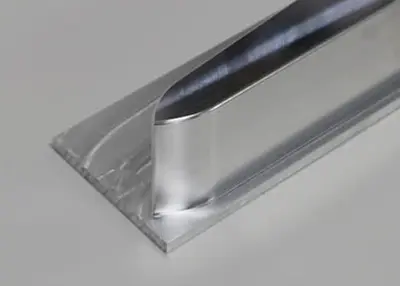 What Is Galvanized Sheet Metal? The Complete Basics to Get StartedOctober 12, 2023Galvanized sheet metal is one of the most cost-effective and popular types of metal in the market. Here are the complete basics about it for you to get started.view
What Is Galvanized Sheet Metal? The Complete Basics to Get StartedOctober 12, 2023Galvanized sheet metal is one of the most cost-effective and popular types of metal in the market. Here are the complete basics about it for you to get started.view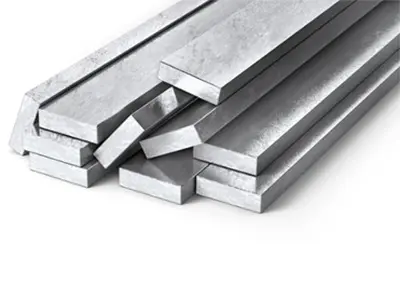 Unlocking the Infinite Potential of CNC Milling MaterialsFebruary 29, 2024In the intricate tapestry of CNC milling materials, the careful selection of materials emerges as the linchpin, dictating the success and precision of every project.view
Unlocking the Infinite Potential of CNC Milling MaterialsFebruary 29, 2024In the intricate tapestry of CNC milling materials, the careful selection of materials emerges as the linchpin, dictating the success and precision of every project.view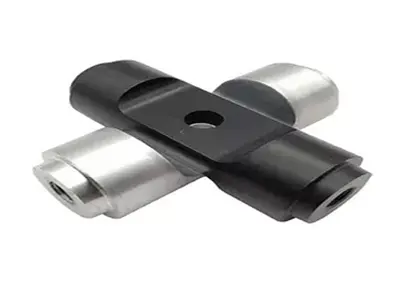 Protect, Enhance, Beautify: The Versatility of Blackening Surface TreatmentsDecember 4, 2023Surface treatments play a vital role in maintaining and enhancing the durability and appearance of various materials. Whether it is for aesthetic purposes, rust prevention, or to improve wear resistan...view
Protect, Enhance, Beautify: The Versatility of Blackening Surface TreatmentsDecember 4, 2023Surface treatments play a vital role in maintaining and enhancing the durability and appearance of various materials. Whether it is for aesthetic purposes, rust prevention, or to improve wear resistan...view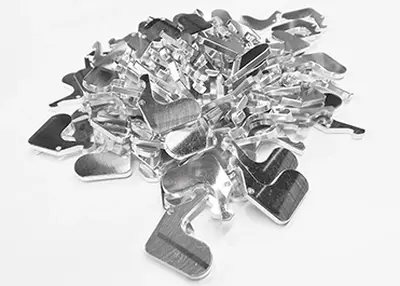 Custom Machined Metal Parts: Precision at Your FingertipsNovember 9, 2023Do you crave perfection in your machinery? Are you seeking the ideal metal components for your projects? You've come to the right place! Welcome to Richconn, your reliable partner for custom machined metal parts. In this comprehensive guide, we'll explore the world of precision engineering, from understanding the basics to choosing the right materials, processes, and designs.view
Custom Machined Metal Parts: Precision at Your FingertipsNovember 9, 2023Do you crave perfection in your machinery? Are you seeking the ideal metal components for your projects? You've come to the right place! Welcome to Richconn, your reliable partner for custom machined metal parts. In this comprehensive guide, we'll explore the world of precision engineering, from understanding the basics to choosing the right materials, processes, and designs.view What Is CNC Metal Processing | A Comprehensive GuideJune 4, 2024What is CNC metal processing? What should we pay attention to when choosing a reliable partner for the metal processing project? Here come the answers!view
What Is CNC Metal Processing | A Comprehensive GuideJune 4, 2024What is CNC metal processing? What should we pay attention to when choosing a reliable partner for the metal processing project? Here come the answers!view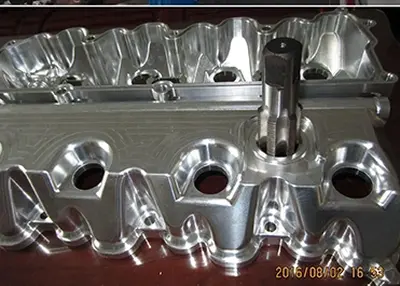 Exploring the World of Cold Machined Parts: Unveiling the Secrets of Performance and ManufacturingNovember 14, 2023In the realm of precision engineering, the term cold machined parts sparks curiosity and a quest for knowledge. As we delve into this intricate domain, my aim is to unravel the mysteries surrounding these components, providing you with a comprehensive understanding of their technology, applications, and performance.view
Exploring the World of Cold Machined Parts: Unveiling the Secrets of Performance and ManufacturingNovember 14, 2023In the realm of precision engineering, the term cold machined parts sparks curiosity and a quest for knowledge. As we delve into this intricate domain, my aim is to unravel the mysteries surrounding these components, providing you with a comprehensive understanding of their technology, applications, and performance.view